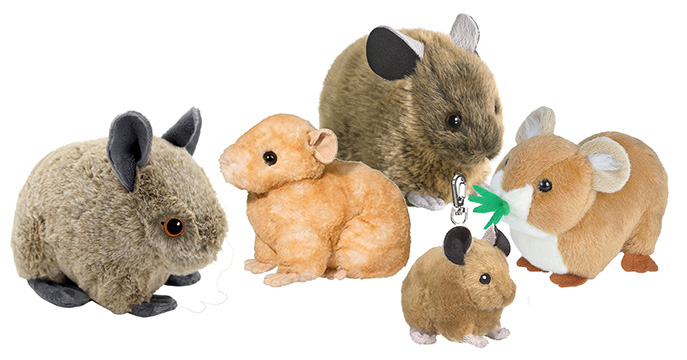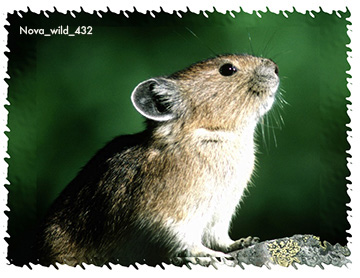

Find Pika Stuffed Animals and information at Animals N More.
The image above shows a Wild Republic Pika (right),Wildlife Artists Pika and keychain, the Nature Planet Pika with embroidered eyes (left) and
Douglas Petra the plush toy Pika center.
Pikas belong to the family Ochotonidae. There are 26 species worldwide, most of them are in Eurasia. There are two species in North America: the Collared Pika and the American Pika. They are also called rock rabbits or coneys.
Pikas are small mammals, only about 7 inches long and weighing about 5 ounces.  Looking much like a short-eared, stubby legged rabbit, they have short lifespans, only about 3 years. They are social animals, living in colonies. They communicate with barking sounds and bleatings. They can "throw" their calls, similar to a ventriloquist.
Looking much like a short-eared, stubby legged rabbit, they have short lifespans, only about 3 years. They are social animals, living in colonies. They communicate with barking sounds and bleatings. They can "throw" their calls, similar to a ventriloquist.
Pikas mate in spring and produce about 2 to 6 offspring each litter. The gestation period is 30 days. The young are born blind and almost hairless. Some pikas have a second litter before summer's end. Young reach adult size in about 45 days.
During the summer, pikas "harvest" plant cuttings and gather them into piles or "haystacks" for use during the winter. Pikas do not hibernate and will require their gatherings to survive the winters. They are diurnal, being active mostly during the morning and late afternoon.
The Collared Pika is found in southeastern Alaska and the southwest portions of Canada's Northwest Territories. The American Pika is found in high elevations (8,000 to 13,500 feet) of western portions of the US and Canada. They inhabit talus slopes and boulder fields.


